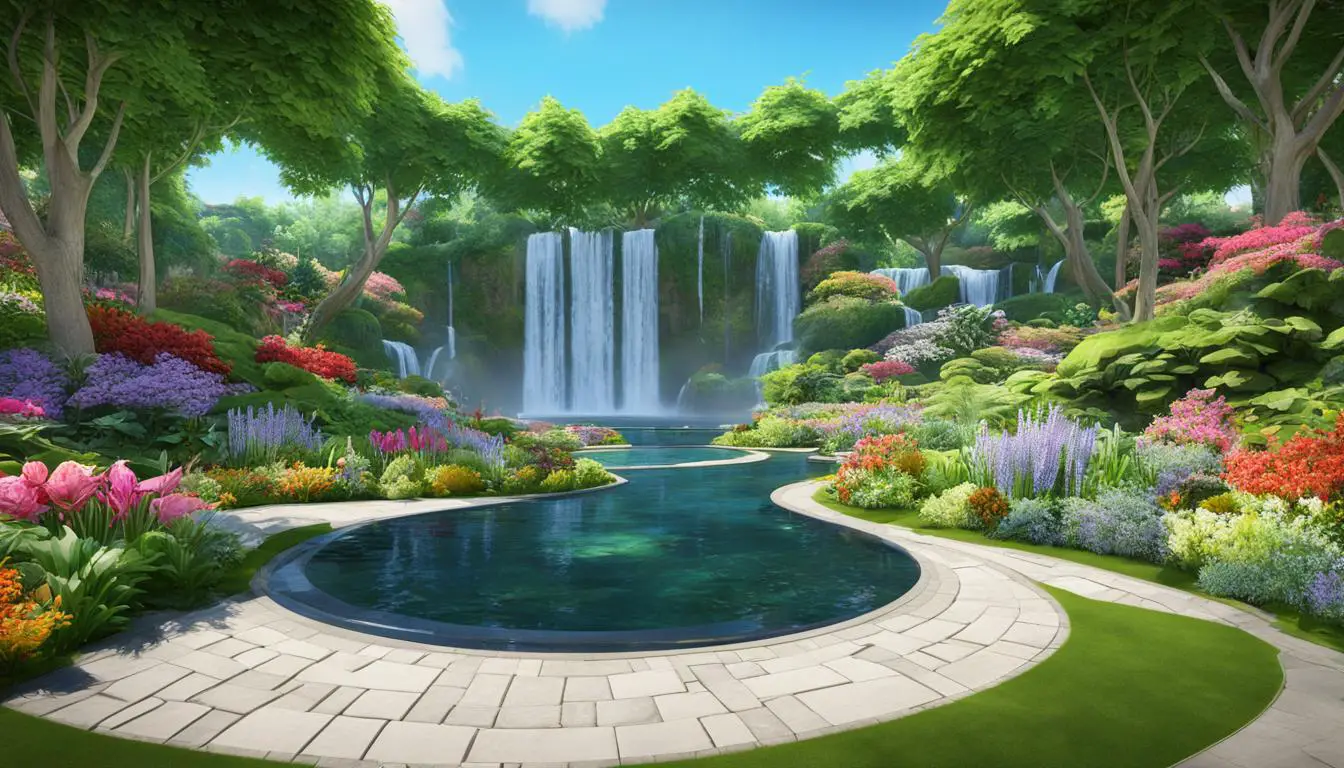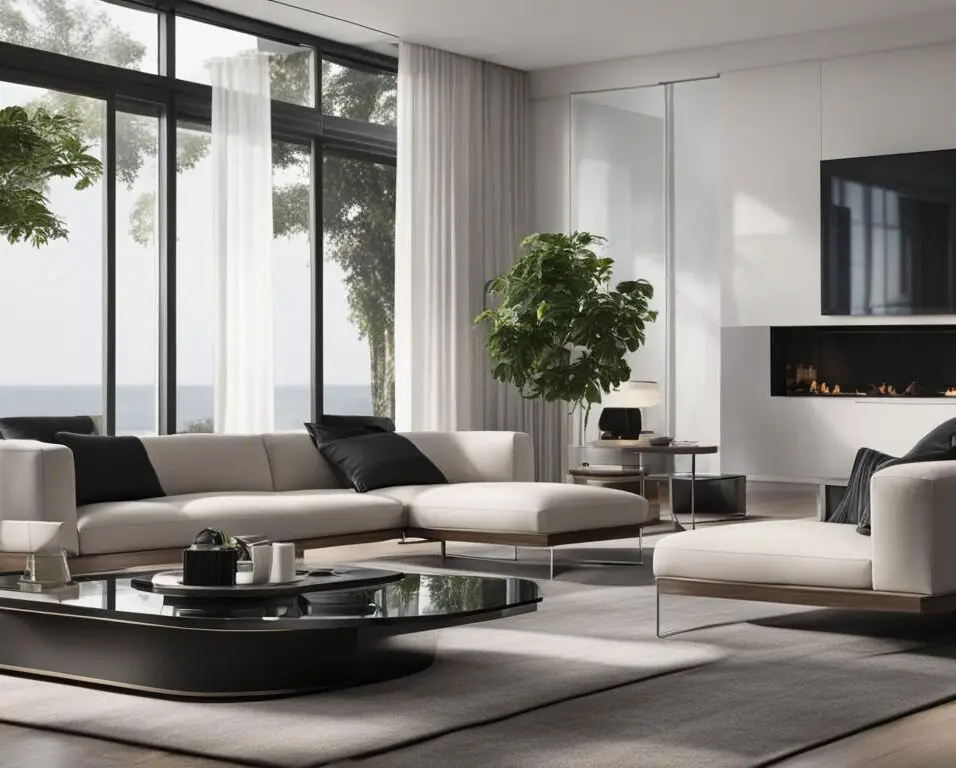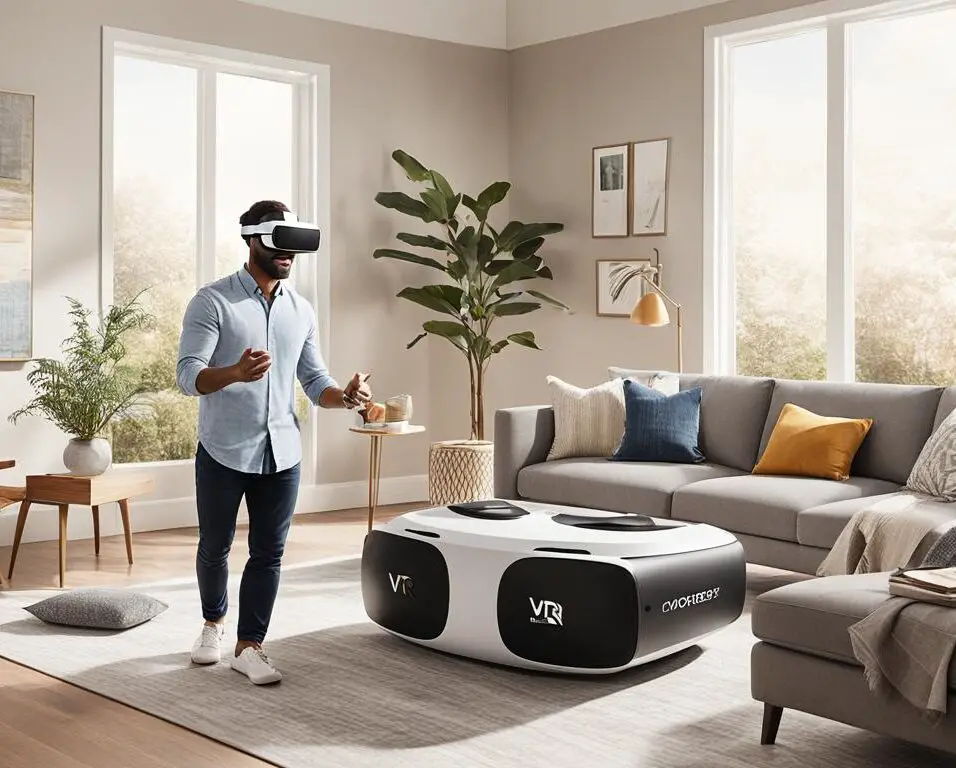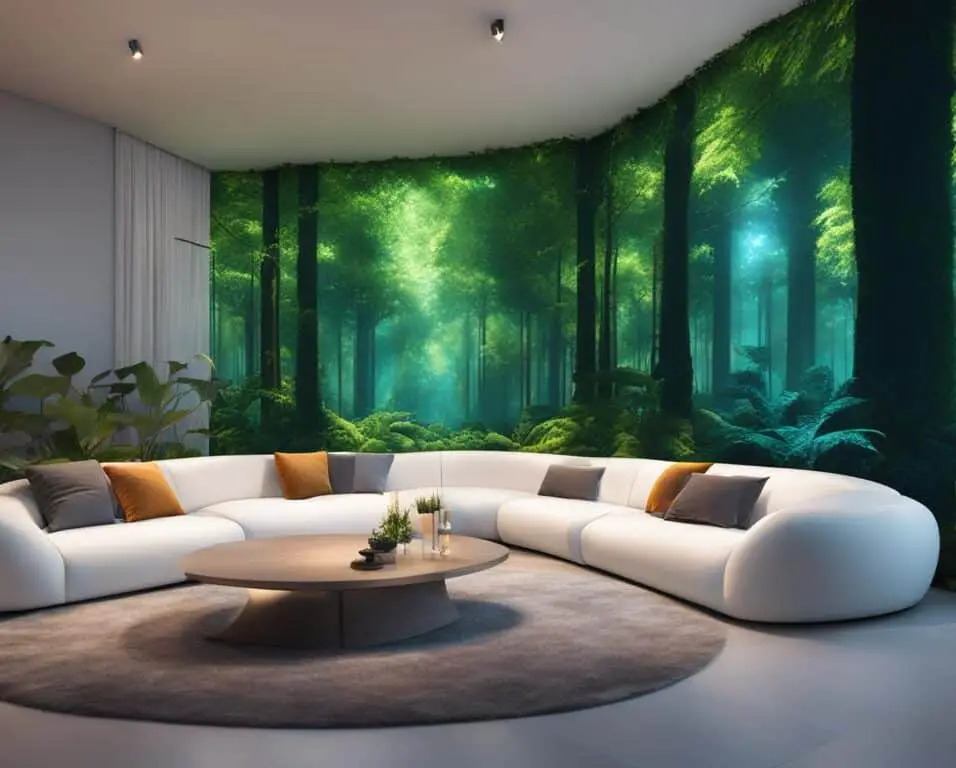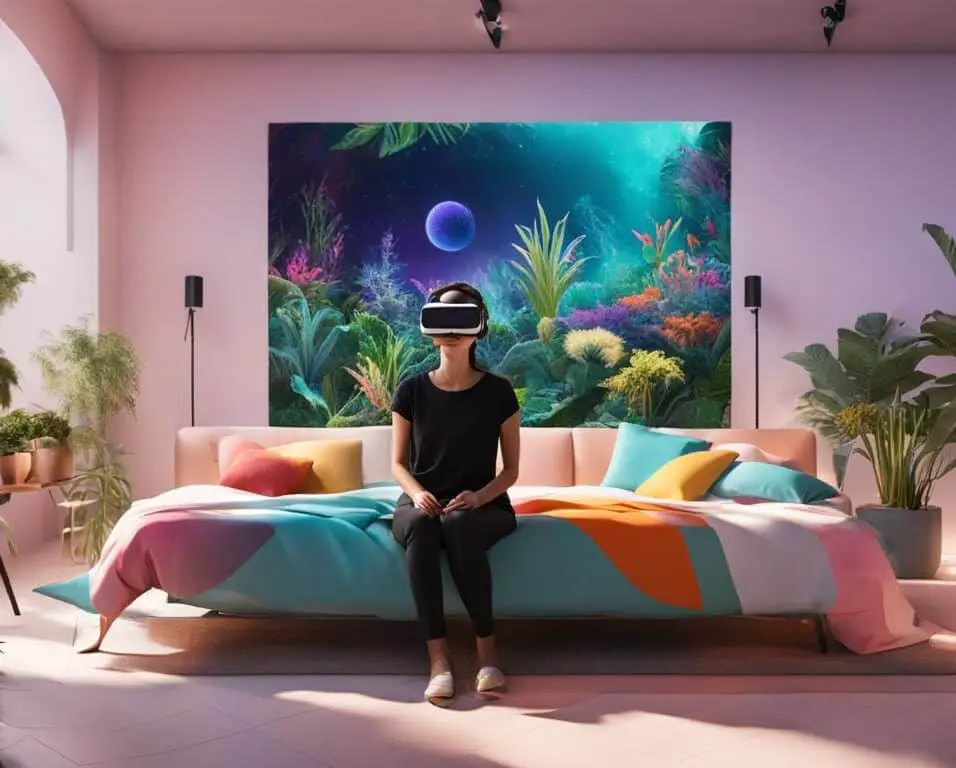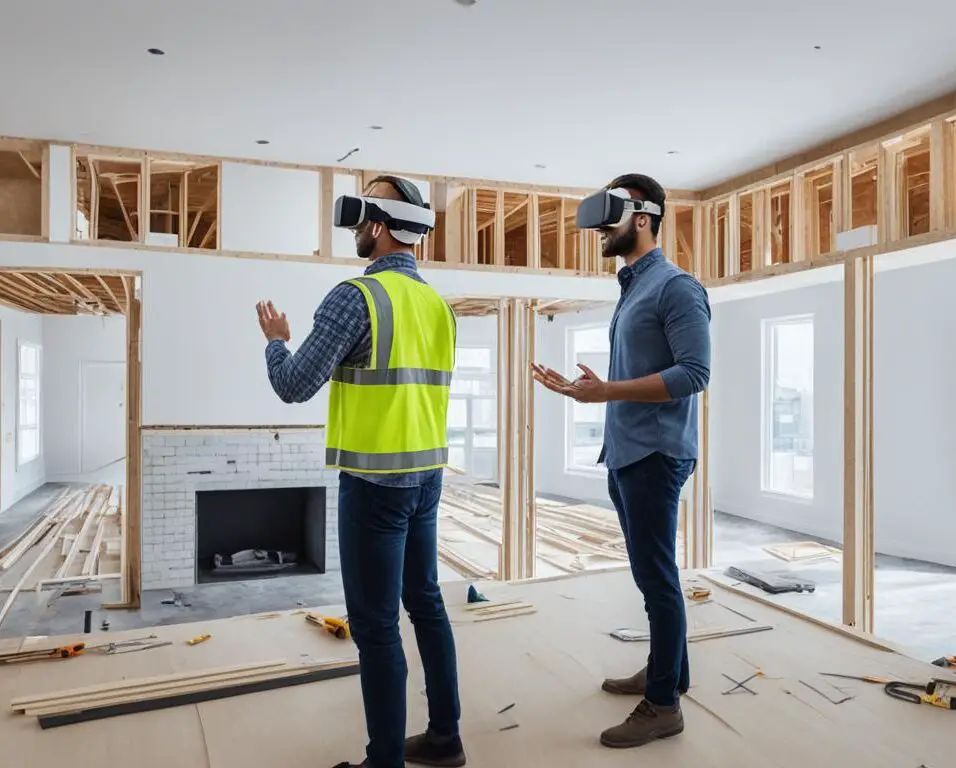Green Thumbs Go Digital: VR Applications in Landscape Architecture
I am excited to explore the exciting world of virtual reality (VR) applications in landscape architecture. VR technology has brought about a revolution in garden design and eco-planning, providing designers with innovative tools and endless possibilities. With VR, we can now create immersive virtual environments that allow clients to experience the proposed designs in a realistic manner, transforming the way landscape architecture projects are conceptualized, visualized, and communicated.
Imagine being able to step into a virtual garden and walk through the pathways, touch the plants, and experience the ambiance before any construction begins. VR empowers designers to showcase their vision in a way that was not possible before. By creating realistic visualizations, VR helps clients better understand and visualize the proposed projects, leading to more effective communication and involvement in the design process.
In this article, we will explore the benefits of VR in landscape architecture, the various VR tools and applications available, successful case studies, the challenges in adopting VR, future trends, and the role of VR in sustainable design and eco-planning. Let’s dive into the exciting world of VR applications in landscape architecture!
Key Takeaways:
- VR technology has revolutionized landscape architecture, offering new tools and possibilities for garden design and eco-planning.
- With VR, designers can create immersive virtual environments that allow clients to experience proposed designs realistically.
- VR enhances design visualization, client communication, and involvement in the design process.
- Various VR tools and applications are available for landscape architecture, enabling designers to import 3D models and explore designs in virtual reality.
- Successful case studies have demonstrated the effectiveness of VR in enhancing design communication, client engagement, and project outcomes.
The Benefits of VR in Landscape Architecture
VR technology offers numerous benefits to the field of landscape architecture, revolutionizing the way designers conceptualize, visualize, and communicate their ideas.
One of the key advantages of VR in landscape architecture is its ability to create realistic visualizations of designs. By immersing clients in virtual environments, designers can provide a more tangible and vivid understanding of how the proposed projects will look and feel. This enhanced visualization capability bridges the gap between imagination and reality, enabling clients to make informed decisions about design elements, spatial arrangements, and material choices.
Moreover, VR allows designers to make real-time changes to the virtual environment, leading to more efficient design iterations. By manipulating various design elements, such as lighting, textures, and plant selection, designers can quickly adapt their designs to meet client preferences and project constraints. This iterative process saves time and resources, ensuring that the final design accurately reflects the client’s vision.
Another significant benefit of VR in landscape architecture is its potential to enhance client communication and involvement. Through immersive and interactive experiences, clients can actively engage with the virtual environment, exploring different viewpoints, understanding the spatial relationships, and experiencing the proposed design firsthand. This level of engagement fosters better communication between designers and clients, leading to more collaborative decision-making and ultimately, a design that aligns with the client’s goals and aspirations.
To summarize, the benefits of VR in landscape architecture include:
- Realistic visualizations of designs
- Efficient design iterations through real-time changes
- Enhanced client communication and involvement
With VR technology, landscape architects have a powerful tool at their disposal to create impactful and immersive design experiences, revolutionizing the way we perceive and interact with outdoor spaces.
VR Tools and Applications in Landscape Architecture
When it comes to landscape architecture, virtual reality (VR) technology has opened up a world of possibilities. VR tools and applications have revolutionized the design process, allowing architects to create immersive virtual environments that bring their ideas to life. With the combination of design software and VR headsets, designers can now explore and visualize their projects in a whole new dimension.
One of the popular design software used in landscape architecture is SketchUp. This powerful tool enables architects to create detailed 3D models of their designs, which can then be imported into VR environments. By wearing a VR headset, designers can step into their creations and experience them firsthand. They can manipulate the virtual environment, apply textures and materials, and make real-time changes to the landscape.
Lumion is another VR tool that is gaining popularity in the industry. It allows designers to create stunning visualizations of their projects with ease. By incorporating VR headsets, architects can take their clients on virtual tours through the proposed spaces. This immersive experience enables clients to better understand the design concepts, make informed decisions, and provide valuable feedback.
| VR Tool | Description |
|---|---|
| SketchUp | Powerful design software for creating 3D models and importing them into VR environments. |
| Lumion | Visualization tool that creates stunning VR tours of landscape architecture designs. |
These VR tools not only enhance the design process but also improve communication between architects and clients. With the ability to walk through virtual landscapes, clients can gain a realistic understanding of the proposed designs and provide valuable input. This level of engagement fosters collaboration and ensures that the final design meets the clients’ expectations.
In addition, VR tools and applications have a positive impact on the efficiency and accuracy of the design process. Architects can quickly iterate and experiment with different design options in the virtual environment, saving time and resources. They can test various materials, lighting conditions, and even simulate environmental factors to optimize the sustainability of their projects.
The integration of VR technology in landscape architecture is undoubtedly transforming the industry. By harnessing the power of VR tools and applications, architects can create visually stunning and sustainable designs, while providing clients with immersive and interactive experiences.
With the evolving landscape of technology, the future of VR in landscape architecture holds even greater potential. As VR tools continue to advance and become more accessible, architects will have more innovative ways to conceptualize, visualize, and communicate their designs. VR has the ability to revolutionize the way we perceive and interact with outdoor spaces, shaping a greener and more sustainable future for landscape architecture.
Case Studies: Successful Implementations of VR in Landscape Architecture
Several design firms and landscape architects have utilized VR technology in their projects, showcasing its effectiveness in enhancing design communication, client engagement, and project outcomes. Two notable case studies highlight the successful implementation of VR in landscape architecture.
A Public Park Redefined
One design firm utilized VR technology to transform the way stakeholders visualized and contributed to the design of a public park. By creating an immersive virtual environment, the firm allowed stakeholders to explore and experience the park before construction began.
“The ability to walk through the park virtually allowed us to provide detailed feedback to the design team. It made the design process collaborative and inclusive, resulting in a park that truly meets our needs and expectations.” – Emily Thompson, a stakeholder involved in the project.
By incorporating VR into the design process, the firm ensured that all stakeholders were actively involved and had a realistic understanding of the park’s design, fostering a sense of ownership and pride in the final outcome.
Bringing Garden Designs to Life
Another case study showcases how VR technology enhanced client engagement in a garden design project. A landscape architect used VR to create a virtual walkthrough of a proposed garden, enabling the client to fully immerse themselves in the design.
“Experiencing the garden in virtual reality allowed me to appreciate the various elements of the design, such as the placement of plants, the pathways, and the overall ambiance. It felt incredibly real and gave me the confidence to move forward with the project.” – Sarah Johnson, the client.
This immersive VR experience gave the client a realistic sense of the space and enabled them to provide feedback and make informed design decisions. By bridging the gap between imagination and reality, VR technology transformed the design presentation and decision-making process.
These case studies exemplify the power of VR in landscape architecture, demonstrating how it facilitates collaboration, enhances client engagement, and ultimately leads to the creation of exceptional outdoor spaces.
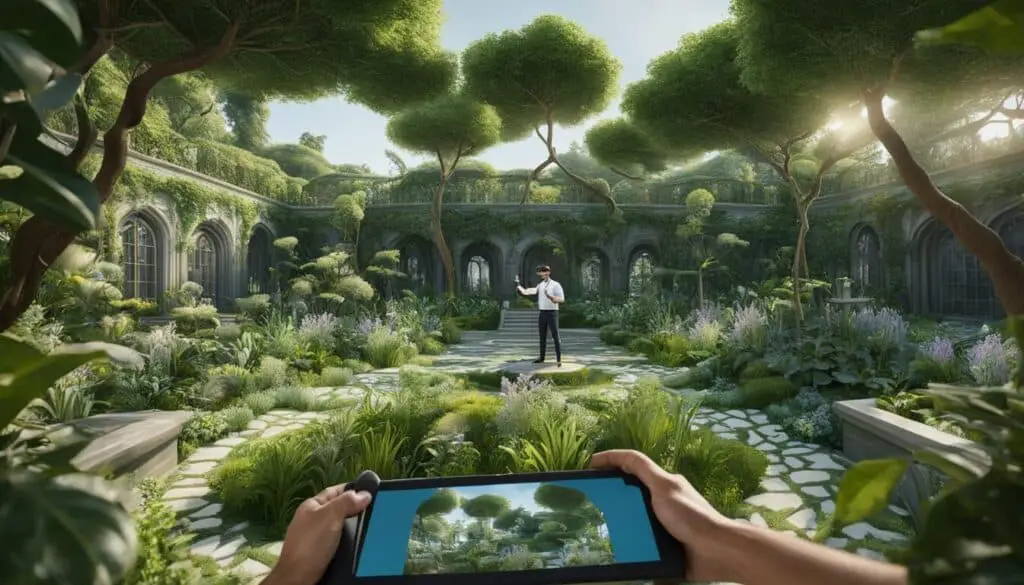
Next, we explore the challenges that arise when adopting VR technology in landscape architecture and offer insights into overcoming these barriers.
Overcoming Challenges in Adopting VR in Landscape Architecture
Despite the numerous benefits of VR technology in landscape architecture, there are several challenges that need to be overcome in order to fully adopt and integrate this transformative tool into the industry. These challenges include implementation barriers, technology limitations, and the initial investment required for hardware and software.
One of the main challenges faced by designers and firms is the initial cost of VR hardware and software. High-quality VR headsets and powerful computers capable of running VR applications smoothly can be expensive. This initial investment may be a barrier for smaller firms or individuals who have limited budgets.
Additionally, there is a learning curve associated with using VR tools and software. Designers and architects need to invest time in acquiring the necessary skills to effectively utilize VR technology. This includes learning how to create immersive virtual environments, navigate VR design software, and troubleshoot technical issues that may arise. The learning curve can slow down the adoption process and may require additional training or hiring of specialized personnel.
Furthermore, technology limitations can pose challenges in the adoption of VR in landscape architecture. VR applications require powerful hardware to ensure a smooth and realistic user experience. The need for high-performance computers and graphics cards may be a barrier for some designers or firms with outdated or less advanced technology infrastructure. Limited access to high-end VR equipment and the associated costs can hinder widespread adoption and implementation.
However, as technology continues to advance and become more accessible, these challenges can be overcome. The costs of VR hardware and software are expected to decrease over time, making it more affordable for designers and firms of all sizes. Training programs and educational resources are also becoming more widely available, helping professionals acquire the necessary skills to work with VR technology.
Moreover, advancements in hardware technology, such as more powerful and affordable computers and graphics cards, will make it easier for landscape architects to incorporate VR into their workflow. As VR becomes more mainstream, developers will likely create more user-friendly software and tools, further reducing barriers to adoption.
Overcoming the challenges in adopting VR in landscape architecture requires a combination of technological advancements, cost reductions, and increased knowledge and skills within the industry. However, with the potential benefits and opportunities that VR offers, it is worth the effort and investment to integrate this technology into the field of landscape architecture.
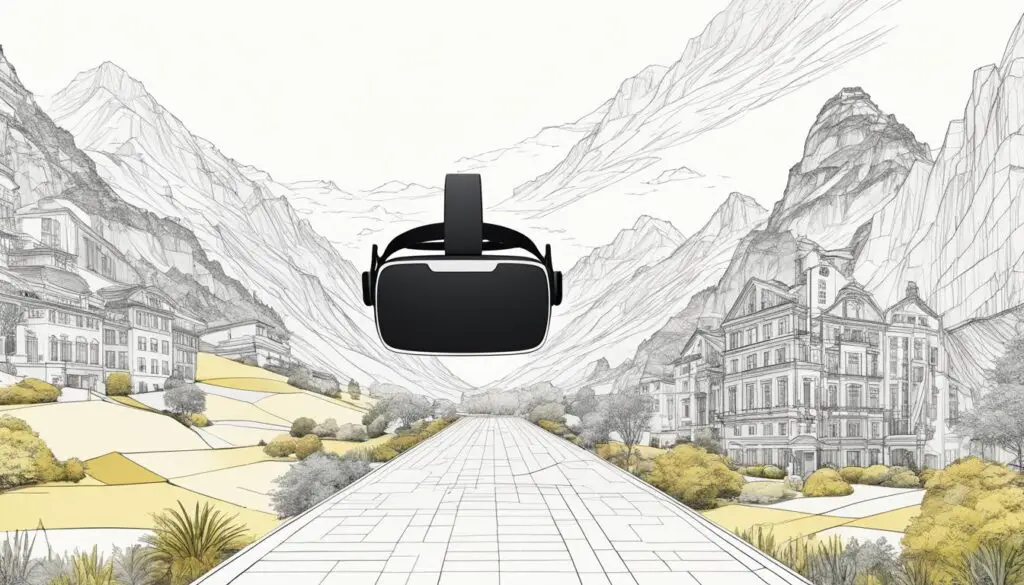
| Challenges | Solutions |
|---|---|
| High initial investment in VR hardware and software | Cost reductions in VR equipment, more affordable options available |
| Learning curve associated with using VR tools and software | Training programs and educational resources, increased knowledge and skills |
| Technology limitations and the need for powerful hardware | Advancements in hardware technology, more user-friendly software |
Future Trends: The Evolution of VR in Landscape Architecture
The future of VR in landscape architecture is filled with exciting possibilities. As technology continues to advance, emerging technologies like augmented reality (AR) and mixed reality (MR) are poised to revolutionize the design and visualization capabilities of VR. These technologies have the potential to create immersive and interactive experiences that go beyond traditional virtual environments.
By integrating AR and MR with VR, landscape architects will be able to overlay virtual elements onto the real world, allowing clients and designers to interact with and experience the proposed designs in a more dynamic and realistic way. This seamless integration of the virtual and physical world will unlock new creative opportunities and enhance the design process.
Another significant trend is the integration of VR with other design tools and software, such as building information modeling (BIM). BIM can provide valuable data and insights for designers, allowing them to create more accurate and efficient virtual environments. By combining VR with BIM, landscape architects can streamline the design process, optimize resource allocation, and improve project coordination.
Emerging Technologies in VR for Landscape Architecture
Let’s take a closer look at the emerging technologies that are expected to shape the future of VR in landscape architecture:
- Augmented Reality (AR): AR technology blends virtual elements with the real world, enhancing the overall design experience. Landscape architects can overlay virtual landscape elements onto physical spaces, allowing clients to visualize the design in real-time and make informed decisions.
- Mixed Reality (MR): MR takes AR a step further by seamlessly integrating virtual objects into the real world. This technology enables landscape architects to interact with virtual objects as if they were part of the physical environment, facilitating immersive and dynamic design experiences.
With these emerging technologies, the future of VR in landscape architecture is bright. The seamless integration of virtual and physical elements, combined with advancements in design software and tools, will empower landscape architects to create innovative and sustainable outdoor spaces.
Comparison of VR Trends in Landscape Architecture
| Technology | Potential Impact |
|---|---|
| Augmented Reality (AR) | Enhanced visualization and real-time design feedback. |
| Mixed Reality (MR) | Seamless integration of virtual and physical elements for immersive design experiences. |
| Integration with BIM | Streamlined design process, improved coordination, and resource optimization. |
The table above highlights the potential impacts of these emerging technologies on landscape architecture. Each technology offers unique benefits that can enhance the design and communication process, ultimately leading to better project outcomes.
Incorporating emerging technologies like AR and MR into VR has the potential to transform landscape architecture by creating more immersive, interactive, and sustainable design experiences.
As landscape architects embrace these advancements and continue to explore the possibilities of VR, we can expect to see exciting developments in the field. The future holds immense potential for the integration of virtual and physical environments, ultimately shaping the way we design and experience outdoor spaces.
The Role of VR in Sustainable Design and Eco-Planning
Virtual Reality (VR) technology has emerged as a powerful tool in landscape architecture, offering innovative solutions for sustainable design and eco-planning. By harnessing the potential of VR, designers can simulate a range of scenarios and environmental factors, enabling them to optimize their designs with considerations for energy efficiency, water conservation, and ecological impact. VR allows for a comprehensive evaluation of the proposed design’s sustainability, paving the way for a more eco-friendly built environment.
One of the remarkable advantages of VR in sustainable design is the ability to visualize and experience the environmental benefits firsthand. Through immersive virtual environments, users can explore and understand sustainable design principles, such as green infrastructure, rainwater harvesting systems, and renewable energy integration. VR facilitates an interactive educational experience, raising awareness about eco-friendly practices and inspiring individuals to make more environmentally conscious choices.
“VR technology provides designers with a unique opportunity to engage the public in sustainable design principles and create a sense of ownership in the decision-making process.”
Furthermore, VR enables designers to involve the public in the eco-planning process. Through virtual walkthroughs, stakeholders can actively participate in the design review and provide valuable feedback. This inclusive approach fosters a sense of community engagement and collaboration, resulting in designs that better reflect local needs and priorities. By incorporating diverse perspectives, VR promotes sustainable design solutions that are not only aesthetically pleasing but also socially and environmentally responsible.
The integration of VR technology in landscape architecture also offers tangible environmental benefits. By optimizing designs in the virtual environment, designers can minimize negative impacts on ecosystems, habitats, and natural resources. VR facilitates the exploration of alternative design concepts and their consequences, allowing for informed decision-making and more sustainable outcomes. This iterative process helps designers identify the most effective solutions for reducing carbon emissions, conserving energy, and promoting biodiversity.
As VR technology continues to advance, it holds immense potential for reshaping the landscape architecture industry towards a more sustainable future. Through its ability to simulate and visualize sustainable design principles, engage the public, and optimize ecological considerations, VR has the capacity to drive meaningful change in the way outdoor spaces are planned and developed. By embracing the opportunities presented by VR, landscape architects can lead the way in creating a more sustainable and resilient built environment.
The Benefits of VR in Sustainable Design and Eco-Planning:
- Simulation of environmental scenarios for optimized design
- Visualization of sustainable design principles to raise awareness
- Engagement of the public in the eco-planning process
- Minimization of negative impacts on ecosystems and natural resources
- Promotion of energy efficiency, water conservation, and biodiversity
VR offers a transformative approach to landscape architecture, unlocking new realms of creativity, collaboration, and sustainability. Its potential for enhancing sustainable design and eco-planning cannot be underestimated, as it empowers designers, engages communities, and safeguards the natural environment. Embracing VR technology in landscape architecture is a step towards a more sustainable future, where human and ecological well-being can coexist harmoniously.
Conclusion
The integration of VR applications in landscape architecture has brought about a design revolution, opening up new opportunities for design visualization, client communication, and sustainable planning. These advancements in VR technology have revolutionized the way designers conceptualize, visualize, and communicate their landscape architecture projects.
With the continuous advancements in VR technology and its integration with other design tools, the future possibilities in landscape architecture are vast. As designers and firms embrace VR applications, we can expect to witness further innovations and improvements in the field. VR has the potential to reshape the way we design and experience our outdoor spaces, providing more immersive and interactive experiences for both designers and clients.
As VR technology develops and becomes more accessible, it has the potential to become an essential tool in landscape architecture. With the integration of emerging technologies like augmented reality (AR) and mixed reality (MR), as well as the collaboration with other design tools such as building information modeling (BIM), VR will continue to drive the evolution of the field. These advancements will contribute to a more holistic and streamlined design process in landscape architecture.
Overall, the future of VR in landscape architecture looks promising. By embracing this technology, designers have the opportunity to transform the industry and create innovative, sustainable outdoor spaces. As VR applications continue to evolve and be adopted by more professionals, we can expect a design revolution that will shape the future of landscape architecture.
FAQ
How has VR revolutionized landscape architecture?
VR applications have revolutionized landscape architecture by offering new tools and possibilities for garden design and eco-planning. Designers can create immersive virtual environments that allow clients to experience the proposed designs in a realistic manner.
What are the benefits of VR in landscape architecture?
VR technology provides several benefits to landscape architecture. It allows designers to create realistic visualizations of their designs, helping clients to better understand and visualize the proposed projects. VR also enables designers to make real-time changes to the virtual environment, allowing for more efficient design iterations. Additionally, VR can enhance client communication and involvement in the design process by providing an immersive and interactive experience.
What VR tools and applications are available for landscape architecture?
There are various VR tools and applications available for landscape architecture. Design software such as SketchUp and Lumion can be combined with VR headsets to create immersive virtual environments. These tools allow designers to import 3D models, apply textures and materials, and explore their designs in virtual reality. Some applications also enable clients to interact with the virtual environment, making design decisions and experiencing the proposed spaces.
Are there any successful implementations of VR in landscape architecture?
Yes, several design firms and landscape architects have successfully implemented VR technology in their projects. For example, a firm used VR to design a public park, allowing stakeholders to visualize the park before construction and provide feedback. Another firm utilized VR to create a virtual walkthrough of a proposed garden, giving the client a realistic sense of the space. These case studies demonstrate the effectiveness of VR in enhancing design communication, client engagement, and project outcomes.
What challenges are there in adopting VR in landscape architecture?
One challenge is the initial investment in VR hardware and software. Another challenge is the learning curve associated with using VR tools and software. Additionally, the technology itself has limitations, such as the need for powerful hardware to run VR applications smoothly. However, as the technology advances and becomes more accessible, these challenges can be overcome.
What are the future trends in VR for landscape architecture?
The future of VR in landscape architecture looks promising. Emerging technologies such as augmented reality (AR) and mixed reality (MR) are likely to further enhance the design and visualization capabilities of VR. Integration with other design tools and software, such as building information modeling (BIM), can also contribute to a more holistic and streamlined design process. As VR continues to evolve, it has the potential to become an essential tool in landscape architecture.
What is the role of VR in sustainable design and eco-planning?
VR technology can play a significant role in sustainable design and eco-planning in landscape architecture. By simulating different scenarios and environmental factors, designers can test and optimize their designs for energy efficiency, water conservation, and ecological impact. VR can also be used to educate and engage the public in sustainable design principles, creating awareness and promoting environmentally friendly practices. VR has the potential to contribute to a more sustainable built environment.
How do VR applications impact landscape architecture?
VR applications have revolutionized landscape architecture, offering new tools and possibilities for design visualization, client communication, and sustainable planning. With the continued advancements in VR technology and its integration with other design tools, the future of VR in landscape architecture looks promising. As more designers and firms embrace this technology, we can expect to see further innovations and improvements in the field of landscape architecture. VR has the potential to reshape the way we design and experience our outdoor spaces.



